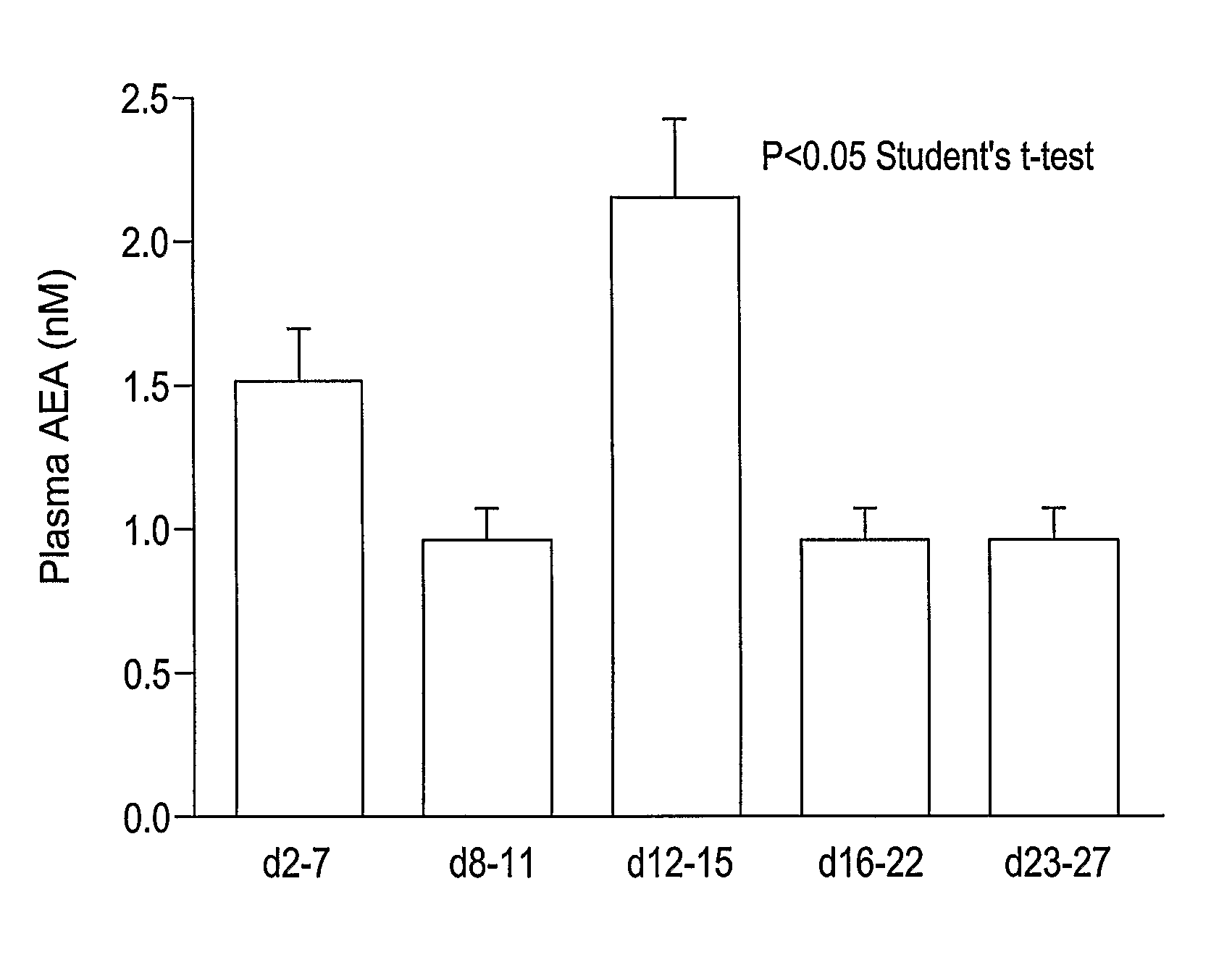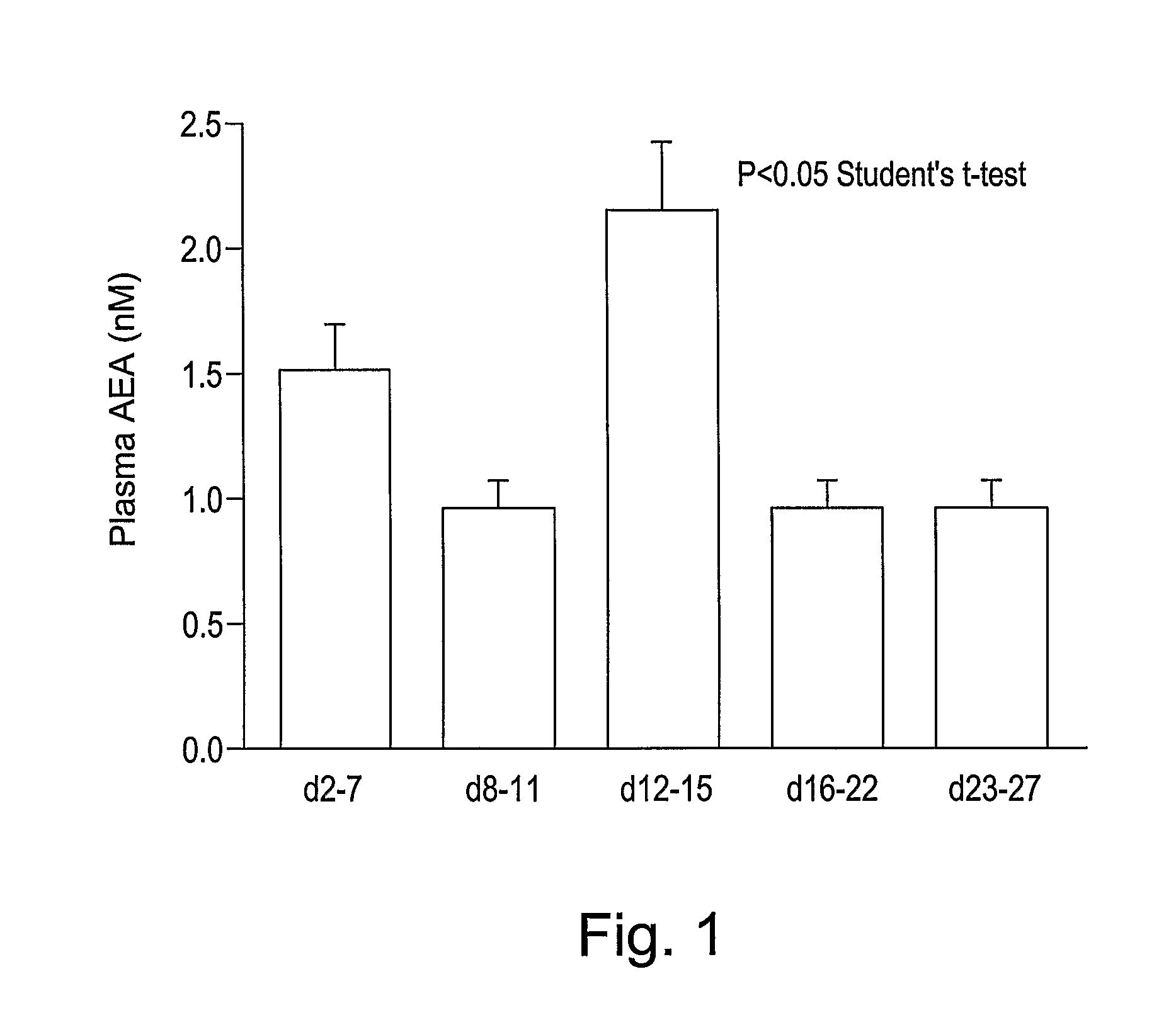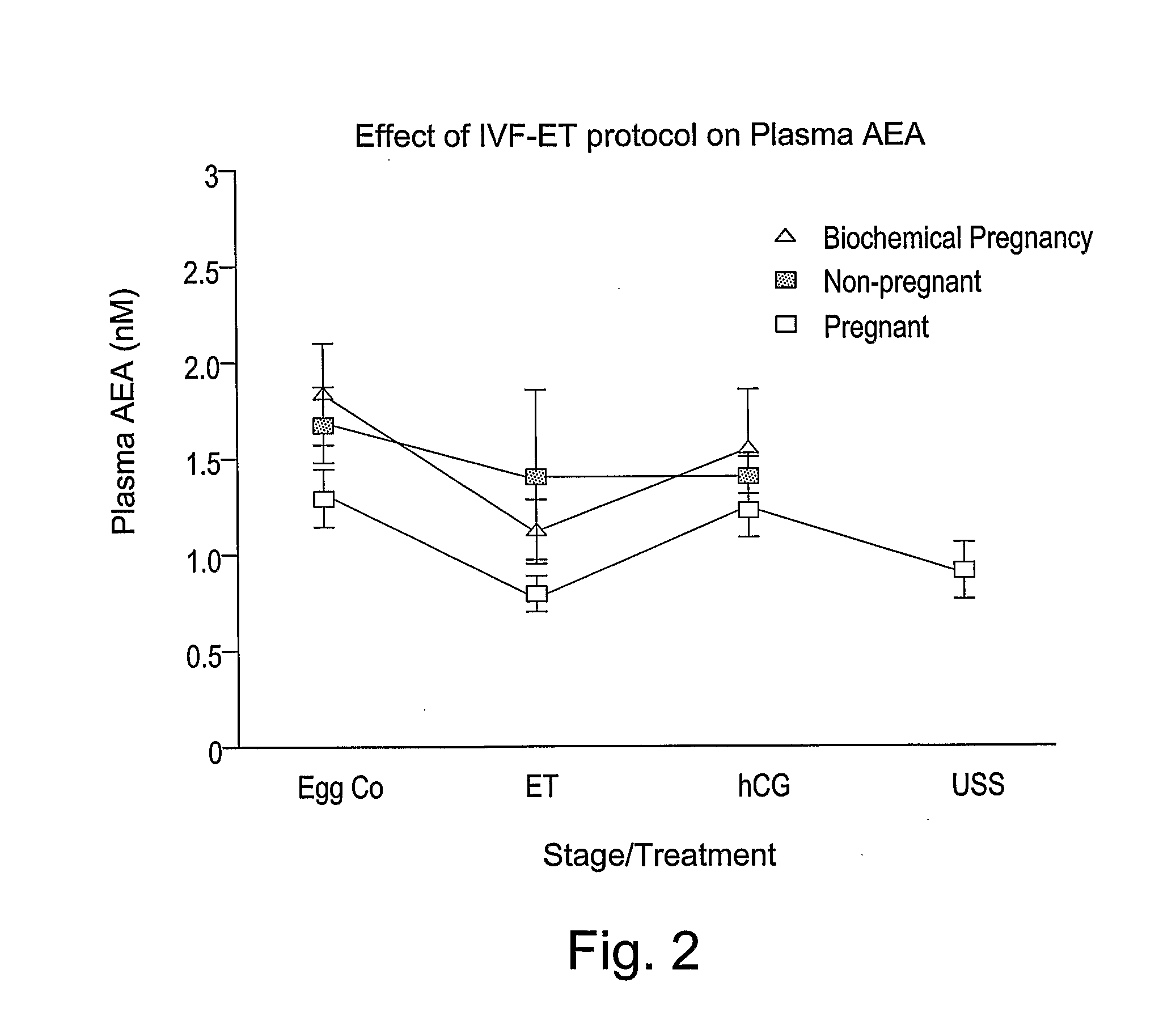Embryo implantation
a technology of embryo implantation and optimal time, which is applied in the direction of material testing goods, biochemistry apparatus and processes, veterinary instruments, etc., can solve the problems of low success rate of fertilisation and pregnancy in each menstrual cycle, wasteful process, and waste of human reproduction, so as to improve the optimal time for embryo implantation and achieve optimal time for implantation
- Summary
- Abstract
- Description
- Claims
- Application Information
AI Technical Summary
Problems solved by technology
Method used
Image
Examples
example 1
[0045]The following examples show quantitation of the levels of anandamide (AEA) during the menstrual cycle to determine whether it changes during a normal menstrual cycle, and quantitation of the levels of anandamide (AEA) to determine levels in women undergoing ART at the time of oocyte recovery, at the time of embryo replacement and serially thereafter to investigate whether the success of the ART could be determined by levels of AEA.
[0046]The study was a cross-sectional study. Plasma AEA levels were measured using a sensitive high performance liquid chromatography-mass spectrometry HPLC MS / MS method. Blood samples were taken from 47 women with a median age of 34 years (range 20-45) and BMI 22 kg / m2 (range 19-27) with regular menstrual cycles, with no medical problems and not on any medication for the preceding 6 months. The menstrual cycle was divided into early follicular d2-7 (n=11), late follicular d8-11 (n=7), ovulatory d12-15 (n=10), early luteal d16-d22 (n=10) and late lut...
example 2
[0050]The following example was a case-control prospective study of women undergoing ovarian stimulation for infertility in an in-vitro fertilisation or intracytoplasmic sperm injection with embryo transfer (IVF / ICSI-ET) programme. The cases were those who had a positive pregnancy test (β-human chorionic gonadotrophin (β-hCG)>5 IU / L) and ultrasound scan evidence of a viable intrauterine pregnancy and the controls were those who had a negative pregnancy test (β-hCG<5 IU / L).
[0051]All the women studied were healthy (i.e. had no other medical disorders) and were not on any long-term medications. None of them smoked cigarettes or admitted to using any recreational drugs. The women were enrolled after written signed informed consent was obtained. The study was approved by the Leicestershire and Rutland Local Research Ethics Committee (i.e. Institutional Review Board).
[0052]Ovarian stimulation by a long protocol using gonadotrophin hormone (GnRH) agonist (Supercur; Aventis Pharma Ltd, Kent...
PUM
| Property | Measurement | Unit |
|---|---|---|
| thickness | aaaaa | aaaaa |
| diameter | aaaaa | aaaaa |
| time | aaaaa | aaaaa |
Abstract
Description
Claims
Application Information
 Login to View More
Login to View More - R&D
- Intellectual Property
- Life Sciences
- Materials
- Tech Scout
- Unparalleled Data Quality
- Higher Quality Content
- 60% Fewer Hallucinations
Browse by: Latest US Patents, China's latest patents, Technical Efficacy Thesaurus, Application Domain, Technology Topic, Popular Technical Reports.
© 2025 PatSnap. All rights reserved.Legal|Privacy policy|Modern Slavery Act Transparency Statement|Sitemap|About US| Contact US: help@patsnap.com



